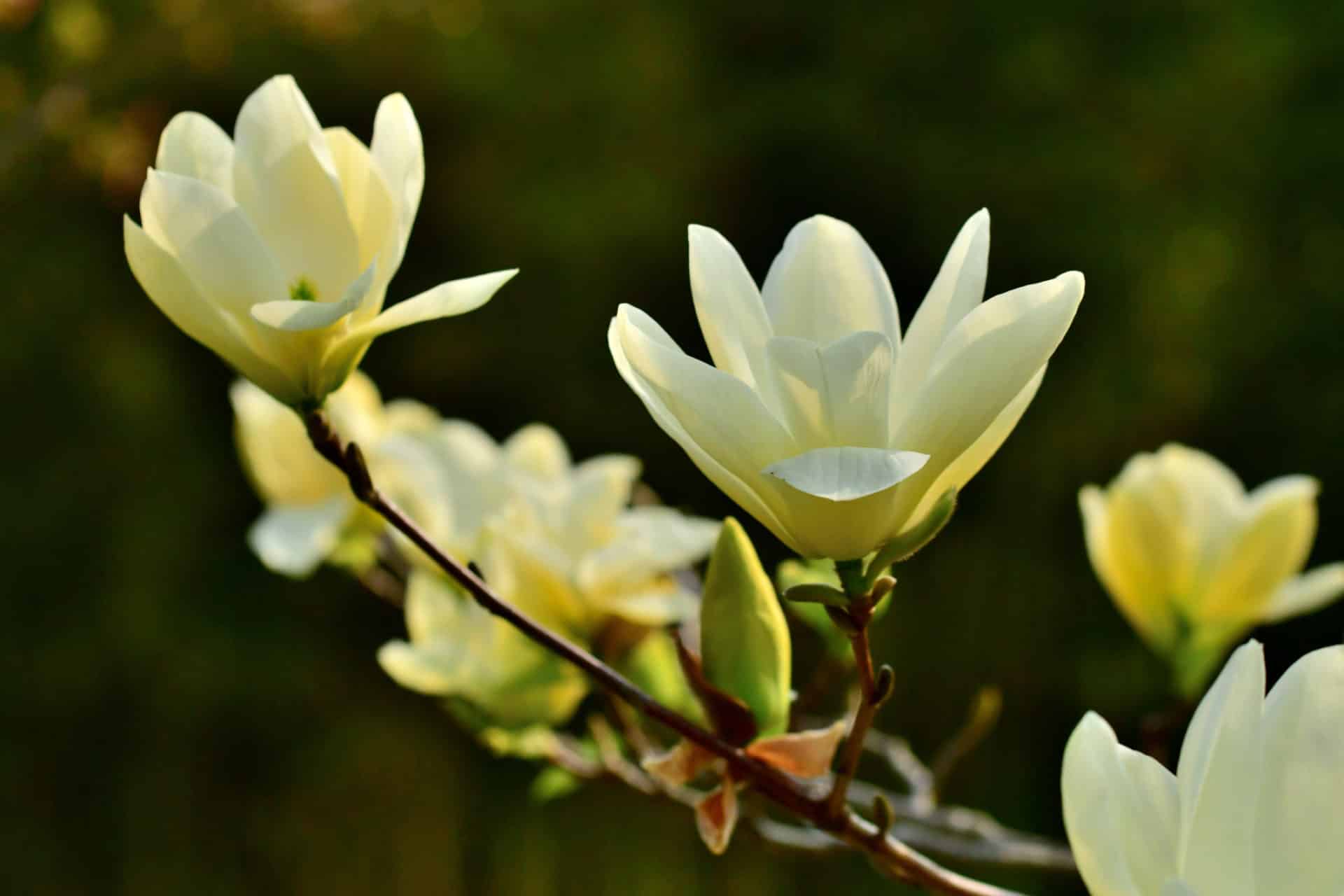Trees
Cucumbertree
Magnolia acuminata

Magnolia acuminata is a magnificent native of ancient lineage. It is a fine choice for Northeast Ohio landscapes given its bold foliage, inconspicuous green or cheery yellow flowers, and attractive fruit with red-orange seed favored by songbirds and small mammals. Cucumbertree occurs naturally from southern Ontario and western New York State, south through Ohio and the Appalachian Mountain region with outliers as far as Louisiana and the Ozarks.
Here at The Holden Arboretum beautiful old cucumbertrees can be found in our natural areas in a number of forest communities. It occurs with slightly less than one percent frequency and about 1.5 percent dominance according to Dawn Gerlica, field botanist, who has surveyed our native plant communities. On Little Mountain several of these trees that have achieved remarkable size. In Bole Woods on the west side of the trail just south of a couple of large red oaks is a cucumbertree 108’ tall, with a 39’ crown spread and a diameter at breast height (DBH) of 32”.
In the gardens, an existing native specimen preserved during the development of the arboretum can be found by the Bole Kiosk on the slope overlooking the Myrtle S. Holden Wildflower Garden Prairie. Measuring 75’ tall, 40’ wide and 31” diameter at breast height (DBH), it was released from competition with other trees as the single trunk with numerous watersprouts coming straight up off its limbs would indicate.
The champion cucumbertree at Holden is at the David G. Leach Research Station in Madison, measuring 102’ by 61’ and 76” DBH. Its trunk is hollow and there are openings on both the east and west sides. It was this tree that David Leach used as the pollen parent when he bred cucumbertree with the yulan (Magnolia denudata) to create ‘Golden Sun‘, ‘Ivory Chalice’, ‘Legend’ and ‘Yellow Garland’. A subsequent generation involving the ‘Miss Honeybee’ cucumbertree produced ‘Golden Gift’ and ‘Golden Goblet’. All yellow flowered magnolias are either cucumbertree or hybrids thereof. The cucumbertree is classified in the Yulania group, the other species being Asian. Other North American magnolias are more distantly related and will not hybridize with cucumbertree.
Charles Tubesing, plant collections curator, has acquired a number of cucumbertrees, which have been planted in the Specimen Tree Collection in Baldwin Acres. These include Magnolia acuminata ‘Crowley’s Ridge’, collected on a ridge on the western limit of its range in Stoddard County, Mo. Tubesing grafted a scion and after nine years our tree measures 13’ x 4.5’, 1.9” DBH. A scion was grafted from a tree in Pendleton County, W. Va. that displayed superior flowers in size and form, a “fine yellow.” Our nine-year-old tree measures 17’ x 9’, 2.9” DBH. Tubesing also collected seed from Jefferson National Forest in Virginia. Now we have a superb 10- year-old specimen that measures 21’ x 12’, 4.4” DBH. Seed was received from the endangered population in southern Ontario. After 15 years one tree in Baldwin is 18’ x 16’, 5.1” DBH, and another in the crabapple collection is 18’ x 10’, 4.2” DBH.
Foliage appears as the flower buds are swelling. Flowering lasts between 3-4 weeks. May 2 is an early start date and June 6 a late end. The green immature fruit is cylindrical, hence the name cucumbertree. The maturing ruddy reddish fruit is attractive throughout much of August and September. Red-orange seeds typically show off in late September. Fall foliage is in shades of tan and brown.
Not a tree for urban, seasonally dry or challenging soil conditions, the cucumbertree has been pretty trouble-free with regard to disease and insect pests at Holden. It is best transplanted from a container or in small sizes. The thin, brownish-gray bark gets rough and scaly, eventually becoming ridged and furrowed.
There is a particularly attractive cultivar in the northeast section of the Display Garden named ‘Yellow Bird’. It is 3/4 cucumbertree and 1/4 lily magnolia (M. liliiflora). In 2010 it bloomed from April 27 through May 24. Its yellow blossoms contrast nicely with nearby lilacs.
Magnolia acuminata ‘Miss Honeybee’, a slower growing, more compact yellow flowered selection by Jim Merrill of Painesville, Ohio is often listed by nursery catalogs as a large shrub or small tree of 20-30’. Our three ‘Miss Honeybee’ trees measure 44-48’after 36 years in Madison. Given that cucumbertrees can live 100-150 years, they all have the potential to become giants. Even their hybrids such as ‘Elizabeth’ do too, as their height is a dominant trait.
Site Selection: Open Spaces (Parks/ Lawns)
Size: Large



